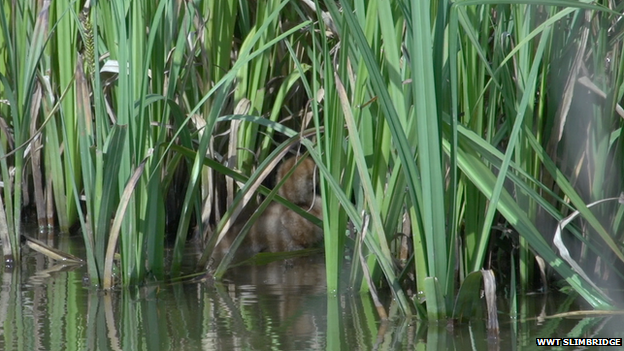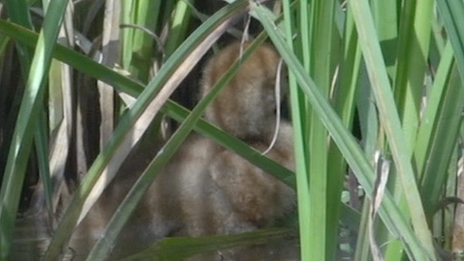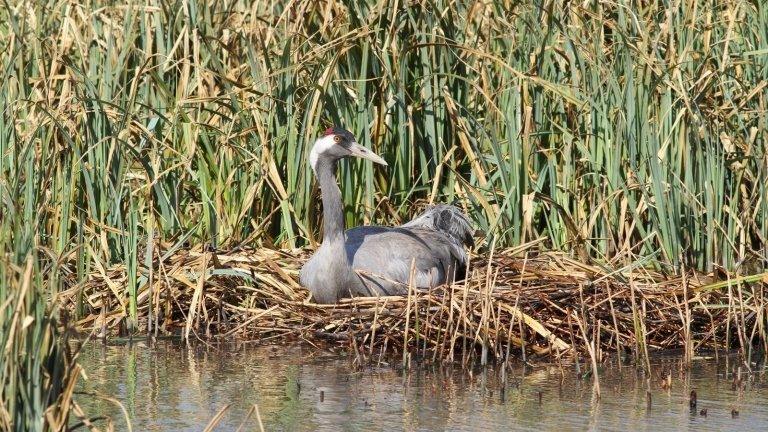Cranes' breeding chances 'high' on Levels, say experts
- Published

Wildlife experts hope the weather will help the cranes nest more successfully this year
Cranes brought on to the Somerset Levels five years ago could breed successfully for the first time, wildlife experts have said.
The RSPB and the Wildfowl and Wetlands Trust (WWT) brought 70 birds to Somerset, with many of them reaching breeding age last year.
But their attempts to breed were thwarted by winter flooding and predators eating their eggs.
The RSPB said a better winter could mean more successful breeding.
'Static winter'
The cranes were hand-reared at Slimbridge, in Gloucestershire and released 60 miles (97km) away in Somerset.
Damon Bridge, from the RSPB, said last year the cranes nested on the edge of the flooded moors but when the flood water receded in April, it exposed their nests to predators.
Cranes build mounds surrounded by water to give their nests more protection.
Mr Bridge added: "We've had a much more static winter, no massive floods but the moors are nice and wet and there are some nice pools on the grasslands.
"If they choose one of those isolated pools, it gives them a good chance of being successful."
Last year, a chick hatched at Slimbridge but it was eaten by a fox.
Amy King, from the WWT, said: "These birds don't do very well if they're disturbed, so it's great they have got this expanse of land they can hide away in and they can rear chicks pretty much without people coming across them."
It takes about a month to incubate the eggs but fledglings are unable to fly for up to 10 weeks, so remain vulnerable.
- Published19 May 2014

- Published9 December 2013
